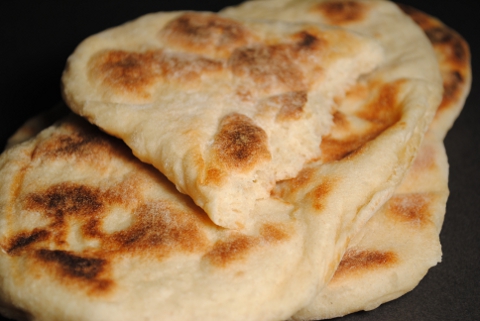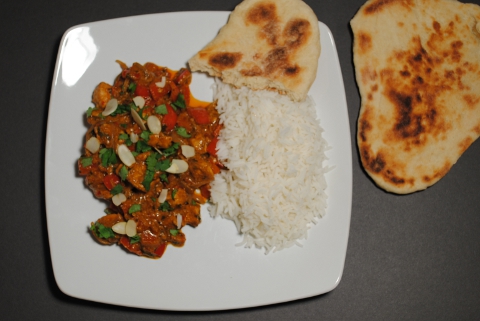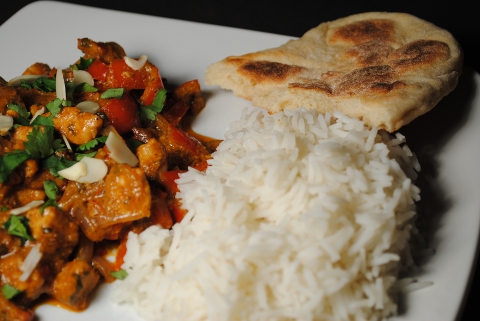A strange inheritance
The British obsession with curry is hard to explain, although there’s no doubt that it’s very real. In part it must have something to do with our colonial past, of which India was famously ‘the jewel in the crown’. Although the present-day role of the curry in British culture is a post-war phenomenon, employees of the East India Company, which was trading in the subcontinent from the 17th century, introduced the tastes of the region to Britain long before the British Raj was established during Queen Victoria’s reign. So long and so intimate was the relationship that many words from India’s mosaic of languages have become commonplace in British English – ‘bungalow’, ‘pyjamas’ and, with wonderful irony, ‘Blighty’ are just a few.
Of course, no curry is complete without a pillowy disc of naan bread. Flatbreads of this kind are found from India right across to the Middle East and North Africa in various guises but, thanks to our other ‘special relationship’, none is so familiar to the average Briton as the naan. Perhaps surprisingly, the word ‘naan’ actually has its roots in Persia, modern-day Iran, and simply means ‘bread’. Like most flatbreads, naan is easy to make. The formula I use draws upon several different recipes I’ve tried over the years.
Like most flatbreads, naan is easy to make. The formula I use draws upon several different recipes I’ve tried over the years.
250g plain flour
100g water
5g salt
10g fresh yeast/5g
1tbsp oil (vegetable, sunflower or groundnut, ideally)
1tbsp plain yoghurt
Combine all the ingredients to make a dough, knead for 10 minutes and bulk ferment for an hour. Once doubled in size, divide into 4 equal pieces and use a rolling pin dusted with flour to roll each piece into a rough oval or egg shape about 1cm thick and 18-20cm in length. The dough will be fairly elastic and will tend to shrink back as you roll it out, so persevere and dust your worksurface with flour to prevent the dough from sticking.
You can cook naan on an iron crêpe pan, but better results can be achieved in the oven. Preheat to 220°c and place the naan directly onto a baking stone if you have one (if not, use a baking sheet. And get a baking stone at your earliest convenience…). Bake for 5 minutes, then turn the naan over and give them another 5 minutes. They should puff up and brown quite quickly. If you are using a pan, keep it over a medium heat – too hot and the naan will burn on the outside and remain uncooked inside. Turn the naan frequently and if they are browning too fast, turn the heat down further. With experience, breads like naan and English muffins can be made very successfully with a crêpe pan or iron ‘bakestone’, but it’s an intuitive art.
If you are using a pan, keep it over a medium heat – too hot and the naan will burn on the outside and remain uncooked inside. Turn the naan frequently and if they are browning too fast, turn the heat down further. With experience, breads like naan and English muffins can be made very successfully with a crêpe pan or iron ‘bakestone’, but it’s an intuitive art.
Naan are the perfect ‘sop’ for a curry, but I remember many years ago in Manchester being introduced to the ‘chilli chip naan’, a self-explanatory carb overload presumably designed to aborb a heavy night’s alcohol intake. It worked – but I couldn’t honestly recommend it as a culinary experience.
